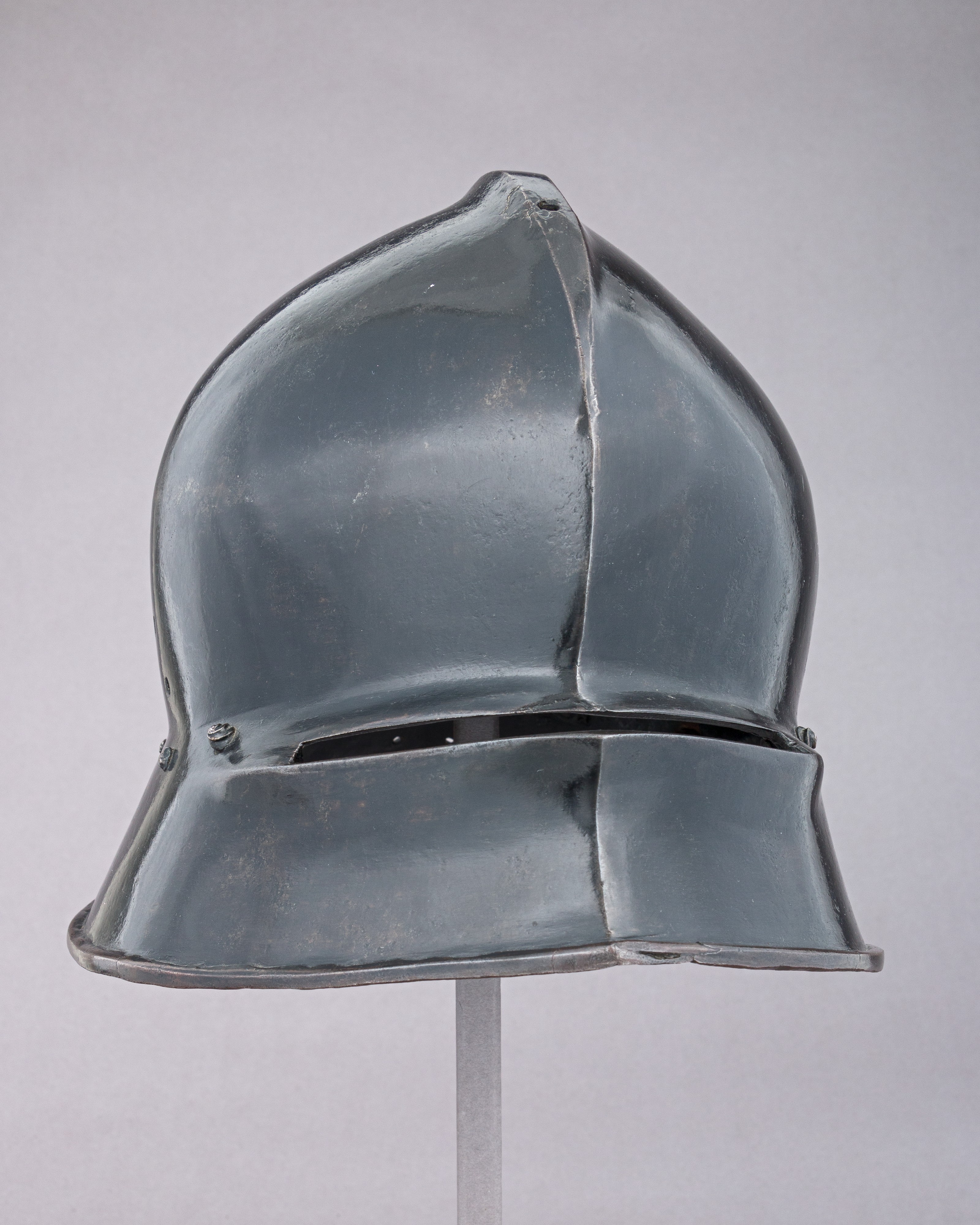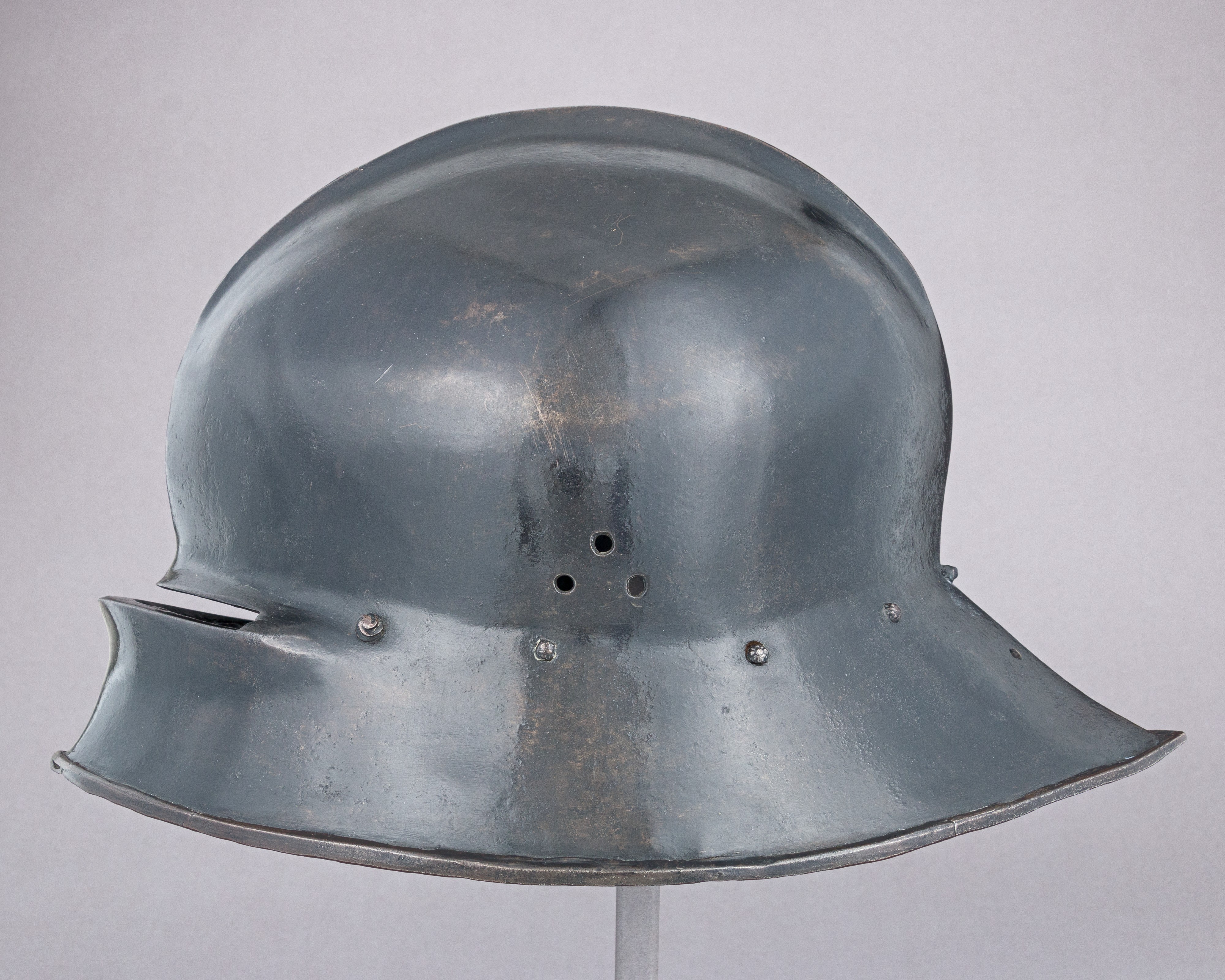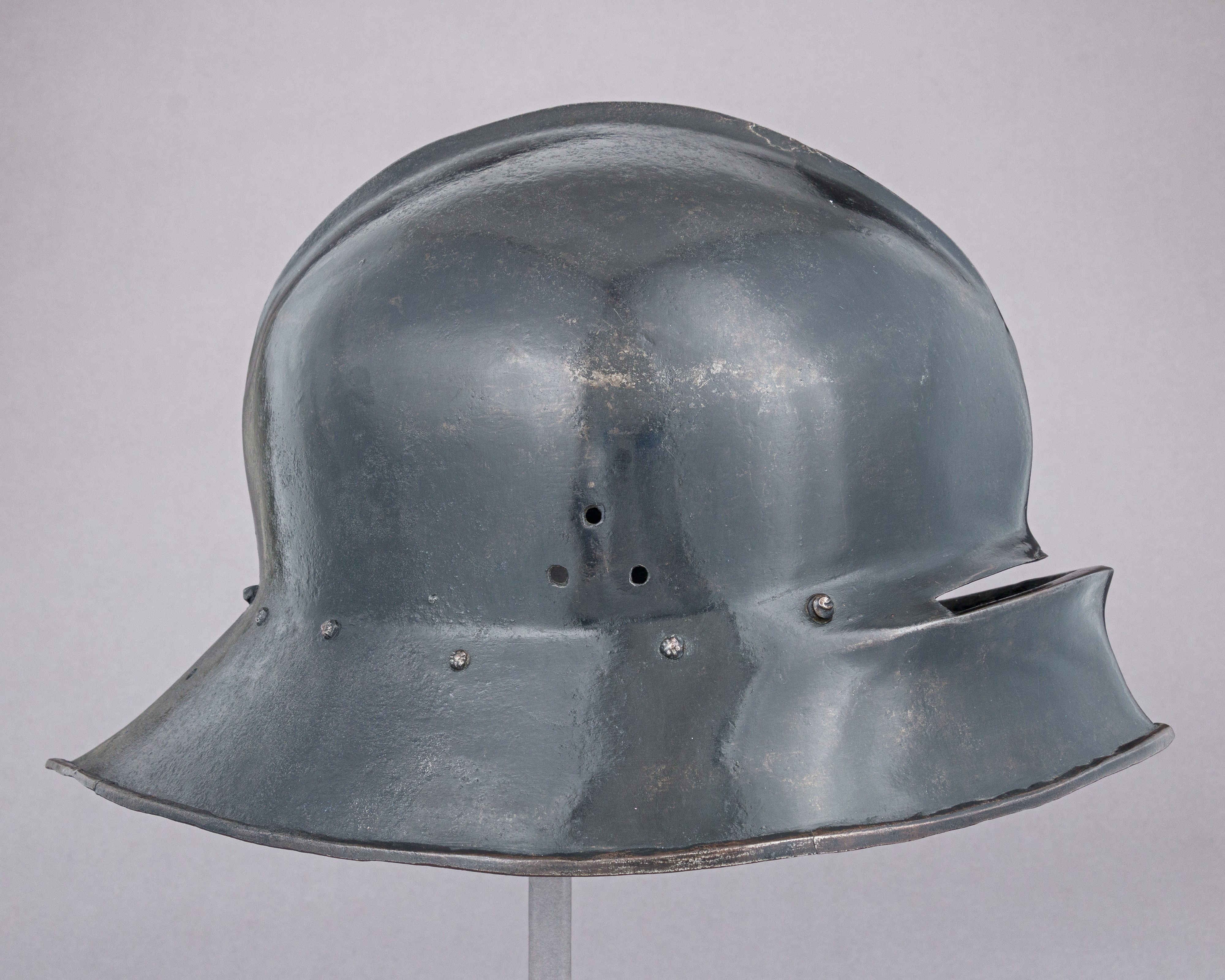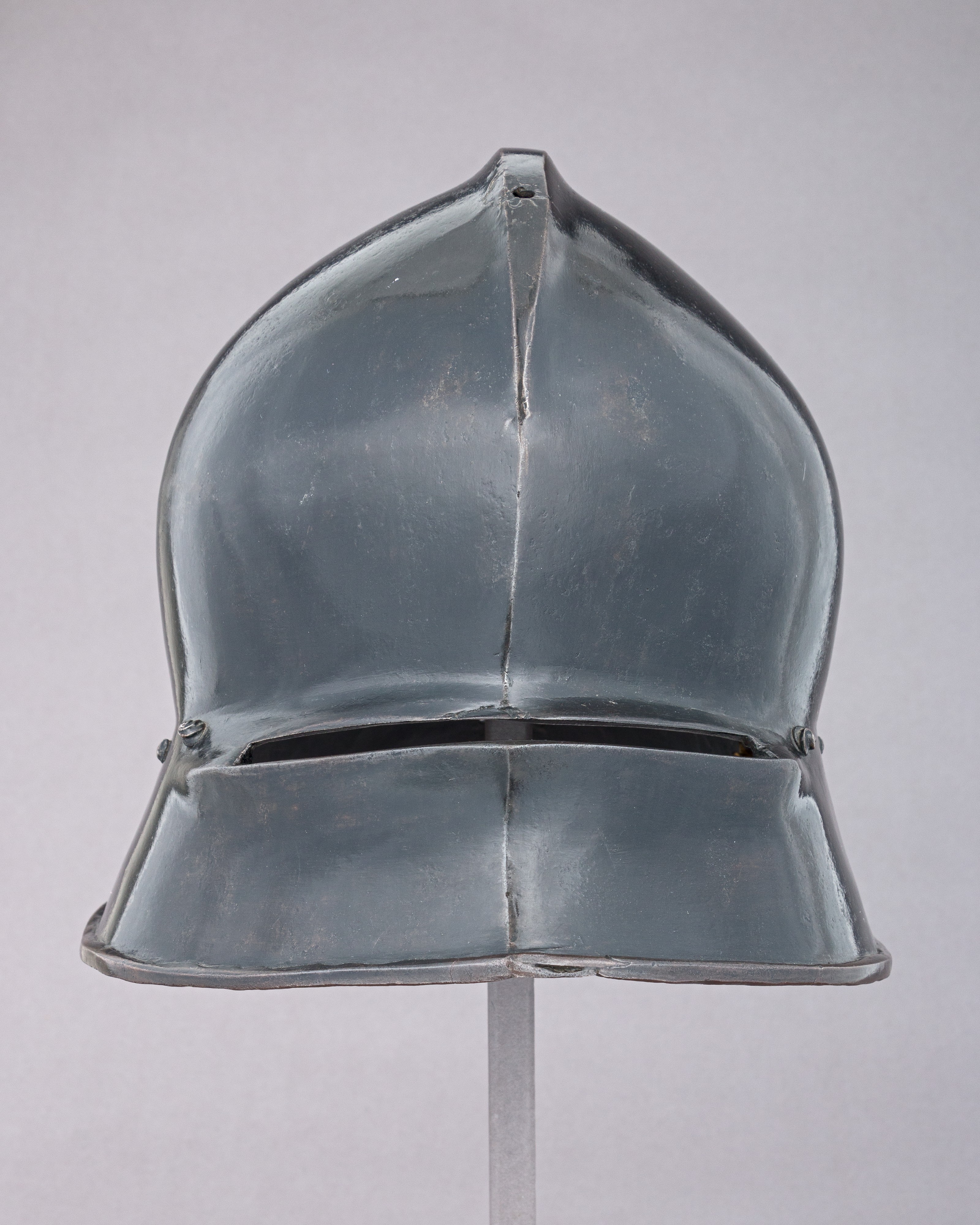Gothic Armor
Not on view
From the early nineteenth century through about the mid-twentieth century, it was not unusual to restore incomplete armor by combining elements from different armors, making missing pieces out of modern or reused old metal and decorating or redecorating pieces to match as needed. With objects in the Metropolitan Museum’s collection, founding curator of the Arms and Armor Department Bashford Dean took a conservative approach for his day, having his armorers make, add to, or alter only those pieces he considered absolutely necessary to create an exhibitable display. In addition, the work done on the Museum’s pieces was usually signed and dated. For his private collection, however, Dean sometimes took a more liberal approach, delighting in composing armors out of disparate parts, augmented by whatever newly made or repurposed pieces were required to complete the ensemble he had in mind.
In this instance, Dean’s goal was to create a late German Gothic armor, a type often considered the pinnacle of armor-making. Complete and homogeneous examples were nonexistent on the art market by Dean’s time. Taking a superb late fifteenth-century helmet by the Landshut armorer Matthes Deutsch, and a nucleus of genuine torso, arm, and leg pieces, Dean’s craftsmen made this truly impressive and historically accurate representation of a German Gothic armor. As a result, about fifty percent of it is restoration. The plates are not signed, but we know from letters written at the time that some of the work was done by Leonard Hugel (1877–about 1935) and Harvey Murton (1907–2004) in about 1926. However, because of the extent of the restorations, only the helmet is regularly on permanent display today.
Due to rights restrictions, this image cannot be enlarged, viewed at full screen, or downloaded.
This artwork is meant to be viewed from right to left. Scroll left to view more.






